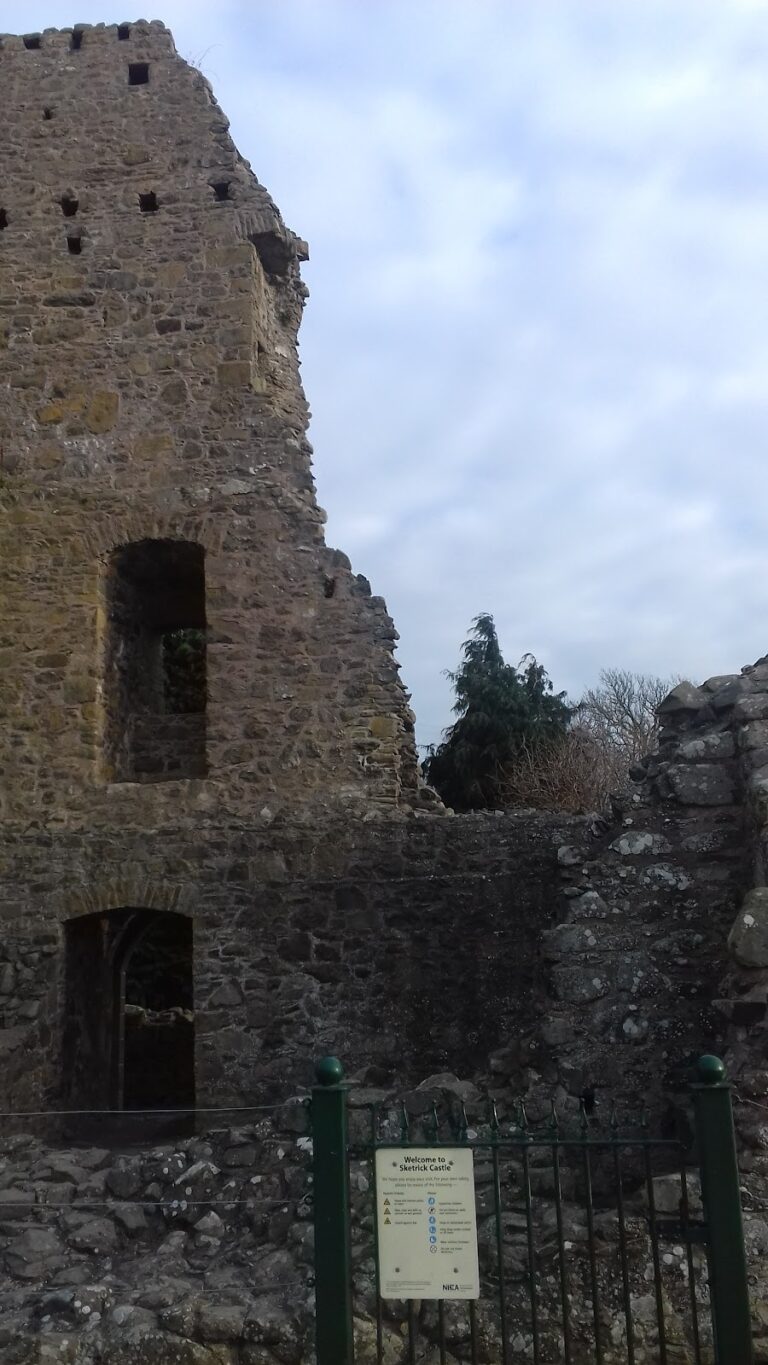Mahee Castle: A 16th-Century Tower House in Northern Ireland
Visitor Information
Google Rating: 4.4
Popularity: Very Low
Google Maps: View on Google Maps
Official Website: en.wikipedia.org
Country: United Kingdom
Civilization: Unclassified
Remains: Military
History
Mahee Castle is situated on Mahee Island within the municipality of Comber, Northern Ireland. This fortified tower house was constructed by English settlers during the late 16th century.
The castle’s origins trace back to 1570 when Captain Thomas Browne, an English soldier, obtained permission from the Bishop of Down to build this stronghold. Its location was strategic, positioned to protect the causeway linking Mahee Island to the mainland and to control access in a border region between two Gaelic territories known as Clandeboye to the north and Dufferin to the south. These adjacent lordships frequently experienced conflicts over territory during the 15th and 16th centuries, and Mahee Castle likely changed ownership several times amid such unrest.
By the early 1600s, the castle was no longer in active use and had been deserted. Locals repurposed stone from its northeastern walls to repair the causeway and construct nearby buildings. Over the following decades, Mahee Castle fell into ruin. Attempts to preserve the structure began in the late 19th century, with more substantial conservation efforts occurring in 1923 under the guidance of H.C. Lawlor and the Belfast Natural History and Philosophical Society. These interventions aimed to halt deterioration by reinforcing vulnerable walls and stabilizing the site.
Further understanding of Mahee Castle’s past came through archaeological excavations conducted from 2001 to 2002. Led by Ruaíri Ó Baoill and Philip Macdonald, these investigations uncovered finds including animal bones, fragments of pottery, knives, and shells dating to the late medieval period. Evidence from the digs suggested that fortifications may have existed on the site prior to the 1570 construction. This research was intended to support ongoing restoration and conservation planning for the castle and its surroundings.
Remains
Mahee Castle is a modest tower house with a rectangular footprint measuring roughly 12.2 meters in length by 6.7 meters in width. It stands on an artificial terrace created atop a glacial hill known as a drumlin, located at the northeastern end of the island. Constructed primarily of thick stone walls—about 1.5 meters wide except on the southeast side, where the wall is 1.8 meters thick—the building was originally three stories tall, though only the lower sections remain today, preserving a height of nearly 7.6 meters.
Inside, the ground floor contains two vaulted rooms designed for different purposes. The larger chamber features a semicircular vaulted ceiling supported by a centrally placed wooden plank, while the smaller adjacent room has a pointed vault formed on paired reed mats and was likely used for storage. The entrance to the tower, about 1.1 meters wide, is set in the northwest wall and includes a defensive feature known as a murder-hole—an opening above the doorway from which defenders could attack intruders. A staircase beside the entrance once provided access to the upper floors.
Surrounding the tower, archaeological remains reveal a walled enclosure or bawn situated to the southwest, which would have served as a protective courtyard. The complex also enclosed a boat bay along the lakeshore, indicating the castle’s role in controlling waterways. During restoration efforts in 1923, vegetation such as ivy was removed, cracks in the masonry were filled with cement to prevent water damage, and a waterproof layer was applied to the roof. Additionally, a buttress wall was constructed approximately four meters from the tower’s southwestern edge to support the terrace and prevent erosion.
Excavations at the site yielded a variety of historical artifacts including shards of flint tools, pottery from multiple periods, animal bones, shells, knives, and even fragments of modern glass. These finds provide insight into the occupation and use of Mahee Castle and its environs across several centuries. The retaining wall built during the 1923 restoration remains integral to stabilizing the terrace upon which the tower stands.










